This was published 1 year ago
Phone taps, diaries and a personals ad with ‘love’ to Lyn: Chris Dawson’s tangled web
The convicted killer has asked NSW’s top court to overturn his murder conviction. This is the key evidence marshalled against him.
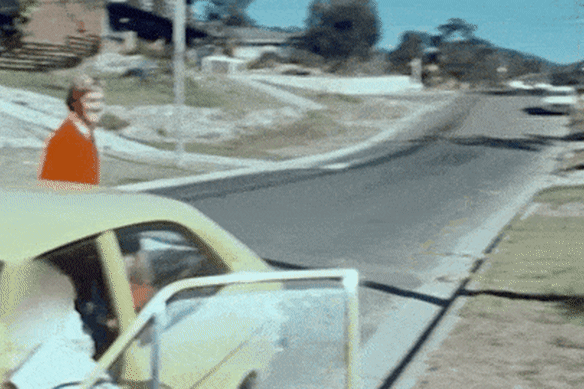
Chris Dawson, in the blue sweater, with wife Lynette Simms and twin brother Paul, pictured on the ABC in 1975.Credit: SMH
On March 27, 1982, a 15-word message appeared among the lonely hearts missives on the personals page of a Sydney newspaper, urging “Lyn” to call “Chris”.
Forty years later, a NSW Supreme Court judge found Christopher Michael Dawson had murdered his wife, Lynette Joy Simms, 11 weeks before it was published – recasting his apparently loving plea as a chilling ruse.
The body of the 33-year-old mother-of-two has never been found.
Dawson would claim the message in The Daily Telegraph was timed for the couple’s 12th wedding anniversary. It appeared in print a day late. The 33-year-old PE teacher and former Newtown Jets rugby league player had already moved a vulnerable former student, JC, into the marital home.
In 2022, Justice Ian Harrison found Dawson had killed Lynette by midnight on Friday, January 8, 1982, or in the early hours of January 9, “for the selfish and cynical purpose of eliminating the inconvenient obstruction she presented” to a new life with the 17-year-old JC.
Now, Dawson has urged the NSW Court of Criminal Appeal to overturn his murder conviction. The 75-year-old was jailed in December 2022 for a maximum of 24 years and is likely to die in prison unless his appeal succeeds.
The appeal court will deliver its decision later this year and will examine the evidence persuading Harrison of Dawson’s guilt beyond reasonable doubt. This is some of the evidence marshalled by the state’s prosecutors.
The ‘saddest Xmas’
The weeks before Christmas Day 1981 were fraught in the Dawson household. JC had first moved into the couple’s Bayview home on Sydney’s northern beaches in October that year, after Dawson told his wife of the HSC student's troubled home life.
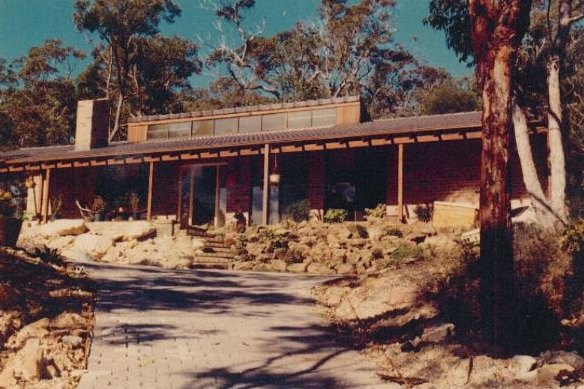
Chris and Lynette’s home in Gilwinga Drive, Bayview, shown in 1978.Credit: NSW Supreme Court
Unbeknown to Lynette, Dawson’s attentions to the Cromer High School student were far from pastoral. His interest in JC had been sexual since 1980, when she was in year 11 and Dawson was her PE teacher.
Dawson had addressed a birthday card to JC in February 1981 to his “lovely, beautiful Bub” and signed off: “knowing we will share all the birthdays to follow all my love forever xxx”.
October 7, 1981
“[JC] has problems + is Chris’s shadow! Lyn ... very unhappy almost in tears about Chris,” Lynette’s mother, Helena Simms, wrote in her diary, which would become a trove for prosecutors.
Early November – December 21 or 22
JC moved doors away to the Bayview home of Dawson’s twin brother Paul and his wife Marilyn, in the same street, after Lynette told the teenager: “You’ve been taking liberties with my husband.”
In a rare window into their domestic lives, played during Dawson’s trial, the twins and their wives – Chris and Lynette dressed in blue – featured in the ABC documentary series Chequerboard in a 1975 episode on twins. Lynette, not yet a mother, greeted her young niece joyously, arms outstretched.
While JC was living with Paul and Marilyn in late 1981, Dawson put down a $200 deposit on a North Manly unit to rent with the teenager. They did not move in. Harrison accepted JC’s evidence that she overheard Dawson talking to his elder brother Peter, a lawyer, about the family law implications of him moving out.
December 21
Dawson signed an agreement for the sale of the family home for $258,000. Lynette, the joint owner, did not sign it. Lynette’s brother, Greg Simms, gave evidence at Dawson’s trial that she told him she did not want to sell the house.
The document was found in the pocket of Lynette’s dressing gown after her disappearance.
About December 22-23
Dawson packed up his belongings, left his wife and their two young daughters – then aged two and four – and set out with JC for Queensland. He said it was “to start a new life”, his trial heard.
“Chris ‘shot through’ left Lyn + 2 girls on their own,” Helena Simms’ diary recorded on December 22.
In a statement to police in 1982, Simms said Lynette had expected her husband “to pick her up after work, came home after waiting to 6pm to find a ‘goodbye’ note + ‘not to paint too black a picture of him to the children’, if I remember what Lyn told me correctly”.
Christmas Day
JC became ill and homesick, and the pair returned to Bayview. They spent the day at his twin brother’s house.
“To my darling [JC], All my love on our first real Christmas together, Knowing I’ll love you more each day, wishing only for your happiness forever. Chris xxx,” Dawson wrote in a Christmas card. The envelope was marked with three letters for her initials but with a D for Dawson, JC told the court.
December 26
JC gave evidence that Dawson dropped her at her mother’s house because she did not want to continue the relationship. He returned shortly afterwards and dropped her at her sister’s home in Neutral Bay.
December 31
Dawson and JC spent New Year’s Eve at Manly. She returned to her sister’s home the next day.
New Year 1982
By about January 2, JC had flown to Kempsey and joined her sisters on holiday at a caravan park in South West Rocks on NSW’s Mid North Coast.
Harrison accepted JC’s evidence that Dawson asked her to call him every day.
Dawson, meanwhile, had moved home after Christmas Day.
January 4: “Saddest Xmas I’ve had. Lyn wants Chris to go to see the Doc, is this Tuesday, I think, to see what is making him so angry with her,” Helena Simms said in a letter to her daughter Patricia Jenkins, Lynette’s sister.
January 8: Dawson and Lynette attended marriage guidance counselling in Manly on Friday. The pair left the session holding hands, Dawson’s trial heard, and Lynette, a trained nurse, returned to her work at Warriewood Childcare Centre.
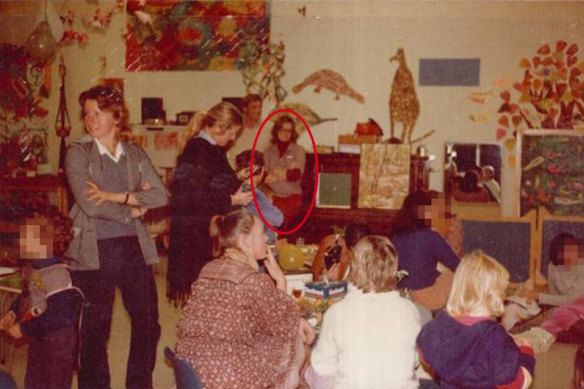
Helena Simms said this was the last photo taken of her missing daughter.Credit: NSW Supreme Court
That evening, Lynette spoke to her mother on the phone for the last time and said her husband had just made her a “lovely drink”. Helena wrote in her diary: “Rang Lyn, sounded half sozzled said all was well.”
Harrison found Dawson had murdered Lynette at their Bayview home that night, or on Saturday morning.
“The last photo of my Lyn,” Helena Simms wrote neatly in a family album next to a photo of her daughter dated Christmas 1981.
The disappearance
What happened the following day, Saturday, January 9, was examined in detail during Dawson’s appeal.
7am: Dawson claimed he dropped Lynette at a Mona Vale bus stop so that she could return some clothing at shops in Chatswood, and potentially go on to Paddy’s Markets. This would have been an early hour for retailers to be open in 1982, Dawson’s appeal heard.
3pm: Dawson took the couple’s daughters to Northbridge Baths, where he had a part-time job as a lifeguard. He claimed Lynette had agreed to meet them there that afternoon, but she had instead called him long-distance at the baths and said she needed “time away ... to sort things out”.
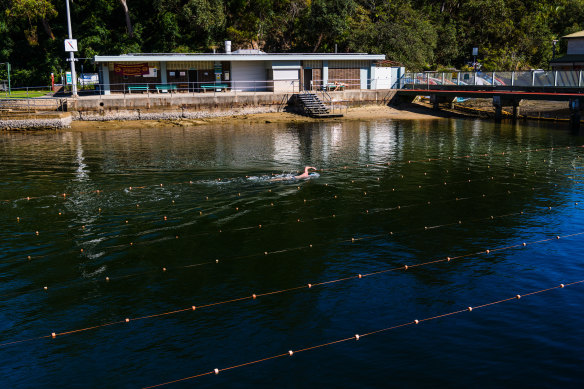
Chris Dawson had a part-time job as a lifeguard at Northbridge Baths.Credit: James Brickwood
Dawson told Lynette’s mother and a family friend about the alleged call at the time, but neither of them heard it.
“Chris agitated, said she’s on Central Coast,” Helena Simms’ diary recorded. “Really shocked!” She took her granddaughters home for the night.
No phone records were available by the time of Dawson’s trial. His barrister, senior public defender Belinda Rigg, SC, said during his appeal that the delay in charging him meant he had “lost ... the capacity for that account, if it’s right, to be independently verified by phone records”.
Justice Christine Adamson, one of a trio of judges hearing the appeal, suggested the Crown had also “lost the capacity to show that [the call] ... came from someone else, like, for example, JC or some member of the family”.
Deputy Senior Crown Prosecutor Brett Hatfield, SC, told the appeal court that, on the Crown case, Dawson had the opportunity to dispose of Lynette’s body that night when the children were not home. Dawson’s trial heard Bayview was an isolated and semi-rural area in the early 1980s.
The days after the vanishing
Dawson claimed he received more calls from Lynette in the following days, before contact ceased. Nobody else heard the alleged calls.
January 10: “Lyn rang him not coming home,” Helena Simms wrote of Dawson’s claim.
January 11: Harrison found Dawson had told JC in a phone call: “Lyn’s gone. She’s not coming back. Come back to Sydney and help me look after the children and be with me.”
January 12: Dawson started living with JC on or about this date, Harrison found.
“I was allowed to go through Lyn’s clothes and keep anything I wanted,” JC said in her evidence at Dawson’s 2022 trial. She described her role as “housekeeper, sex slave, stepmother, babysitter. Slave, just a slave.”
Lynette’s brother, Greg Simms, would later describe JC as “another victim”.
“She was only a child and didn’t get a life to live,” he told Nine in 2022.
January 15: “Lyn rang Chris. Can’t come home yet!” Helena Simms recorded.
January 16: Dawson claimed to police in 1991 that he last heard from Lynette on this date. But Simms’ diary records that “Chris rang no news!”
Mid-January: An artist Lynette had commissioned in late 1981 to sketch portraits of the couple’s daughters called their Bayview home.
The artist said in a statement in 2013 that Dawson told her that “Lynette has gone away and she doesn’t want [the sketches] any more.”
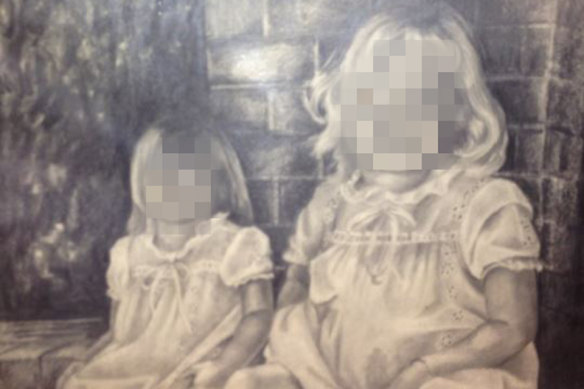
A portrait of the Dawson daughters, commissioned by Lynette in late 1981.Credit: NSW Supreme Court
Dawson reports wife missing
JC turned 18 in February 1982 and Dawson gave her a suggestive birthday card. Days later, he reported his wife missing.
February 18: Dawson filed a missing persons report with Mona Vale police. On his account, he had not heard from his wife for more than four weeks.
The report recorded Dawson had told police that “BankCard indicated that [Lynette] was at Warriewood on the 12th [of January] – again called home on 15th – stated that she needed more time to think – hasn’t been heard of since – May have gone to a religious organisation on the NORTH Coast.”
Harrison said in his judgment “[the] only evidence of the alleged bankcard transactions by Lynette Dawson is what Mr Dawson has told other people”. The banking records were no longer available.
March 27: Dawson placed the classified ad in The Daily Telegraph.
April 29: A note in Lynette’s missing persons file records Dawson’s claim that she had $500 in cash with her when she disappeared. This did not appear in the original report in February. The prosecution alleged this was a lie.
August 16: Dawson filed a fresh document following a police request for more information. In the handwritten report, he claimed he and Lynette had been having “marital problems for approx 2 years, mainly over her Bankcard spending and financial matters in general”.
He said he had travelled north for three days over Christmas 1981 “to be by myself”. No mention was made of JC.
Dawson told police that bankcard “statements for January show [Lynette] made purchases at Katies Narrabeen on 12.1.82 and on February’s statement 27.1.82 Just Jeans Narrabeen”.
September 25: The Simms family, including Lynette’s mother, placed ads in The Sydney Morning Herald and the Telegraph to coincide with what would have been her 34th birthday. They followed up with a birthday notice in the Herald the following year, urging Lynette to “[please] ring and let us know you are well”.
October 31: Dawson took Lynette’s possessions and personal effects in 10 garbage bags to her mother’s house.
The wedding
The Dawsons’ marriage formally ended in divorce in June 1983.
Dawson married JC on January 15, 1984, at the Bayview home he had built with Lynette. They moved to Queensland in December.
JC told Dawson’s trial that he put his hands around her throat on their wedding day. She said her “wedding ring was made from scratch to match his one that he had left over from his first marriage”.
“The diamond ring was made using the diamonds from Lyn’s engagement ring and eternity ring that she left,” she told the court.
July 24, 1984: Helena Simms wrote to Dawson’s lawyers and said she had last seen her daughter on January 3, 1982, and last spoke to her on the phone on January 8. “Up to this very minute neither her parents, brothers, sisters or friends have any contact from her”. She signed off: “Yours in despair.”
The police interview
JC left Dawson in early 1990. She made her first statement to police about Lynette’s disappearance in May that year, triggering a renewed investigation.
Dawson was interviewed by police on January 15, 1991. This time, he told police that in December 1981 he “came up to Queensland with a girl that I was having an affair with at the time”, but their “relationship had finished” by the time his wife vanished in January.
Dawson claimed he “didn’t ask [JC] to come and live with me” in January 1982, and that it was JC who “asked if she could come back, if I could sort of come and get her and bring her back to Sydney”.
“[She] was saying that she missed me obviously but that at that stage I was still under the understanding that she was going to come back and live somewhere else in Sydney, not with me,” he said.
He told police JC did not move in until “several days later”.
The tapped call
In a tapped phone call with his twin brother Paul years later on March 16, 1999, Chris suggested he had needed JC to move in as a babysitter.
Paul asked: “How long was it after Lyn left before [JC] moved in? I couldn’t remember, not with exactness too … They told me Lyn disappeared about mid-January.
“I said that Chris would have needed someone in the house to look after the kids when school started anyway. I’m assuming about the end of January.”
Chris replied: “That’s why I did.”
The call took place after Paul had spoken to police during a reopened investigation into Lynette’s disappearance; an experience he described as “f----ing horrible”. He said police were asking “stupid questions”, including whether there was a path between the brothers’ former homes.
“He implied that something has happened to Lyn and you had the motive,” Paul said.
Chris replied that police “think something has happened to Lyn and I had the motive, and they are going to search the property and do sorts of things. Oh well, good luck to them.”
“They said that [JC] said you said it was alright for her to move in because Lyn wouldn’t be coming back,” Paul replied.
“Oh. So they have interviewed [JC], obviously,” Chris said.
The inquests
A first inquest, in 2001, was terminated on the basis there was evidence before the coroner capable of satisfying a jury that a “known person” was responsible for Lynette’s death. But the then NSW Director of Public Prosecutions, Nicholas Cowdery, KC, determined in November that year there was insufficient evidence to support a murder prosecution.
That process was repeated in 2003.
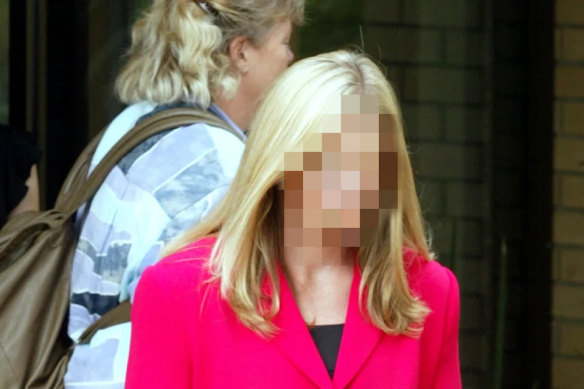
JC outside the 2003 inquest into Lynette Simms’ disappearance.Credit: Sean Davey
Cowdery told the ABC’s Australian Story in 2018: “Without a body, without knowing, first of all, whether in fact [Lynette] is dead, without knowing secondly if she is dead, how she died, it’s very hard to mount a case of a reasonable prospect of conviction just on motive and the undefined existence of means and opportunity. That makes it very weak.”
The reopened investigation
The investigation into Lynette’s unsolved disappearance was reopened in 2015 and ran until December 2018, when Dawson was extradited from the Gold Coast to Sydney and charged with her murder.
A brief of evidence had been forwarded to the DPP on April 9, 2018. The Australian’s podcast on the case, The Teacher’s Pet, was first broadcast from May 18.
The criminal trial
Dawson did not stand trial until May 2022. He was convicted of Lynette’s murder in August that year.
Lawyers for the now-convicted killer had argued unsuccessfully that the criminal proceedings should be permanently stayed, or halted, and pointed in part to pre-trial publicity in arguing he could not have a fair trial.
In sentencing Dawson to a maximum of 24 years in prison, Harrison said he had treated Lynette, a loving wife and mother, as “completely dispensable”. He set a non-parole period of 18 years.
“Mr Dawson planned to kill his wife. Whatever means Mr Dawson employed to kill her, he intended that result. He did so ... in her own home,” the judge said. He condemned Dawson’s “self-indulgent brutality”.
A year was added to Dawson’s non-parole period last year, after he was convicted of unlawful sexual activity with a then-pupil in 1980.
He is first eligible for release in 2041, aged 93.
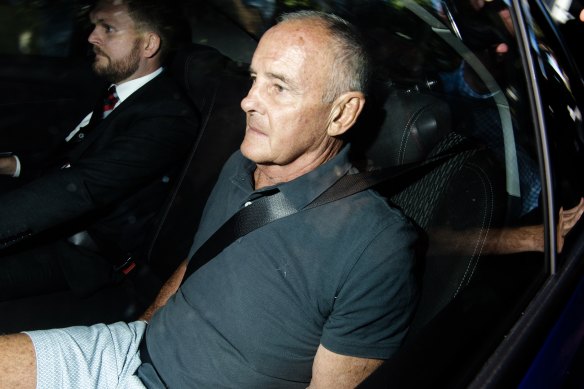
Chris Dawson arrives at Surry Hills Police Station in December 2018 after landing in Sydney to be charged with Lynette Simms’ murder.Credit: James Brickwood
Start the day with a summary of the day’s most important and interesting stories, analysis and insights. Sign up for our Morning Edition newsletter.